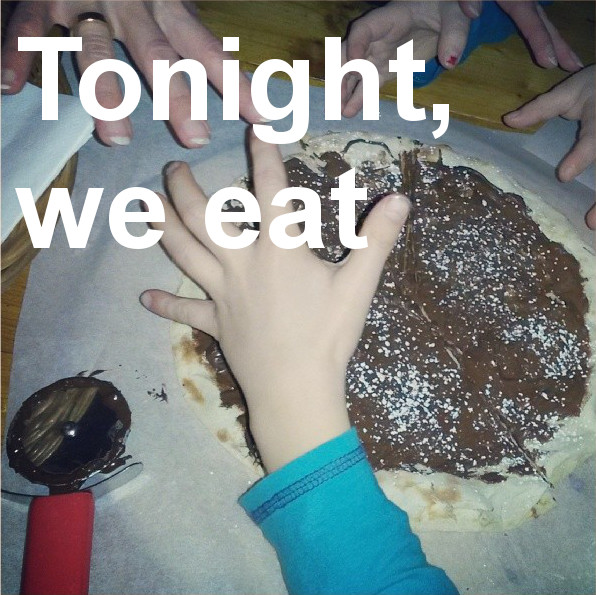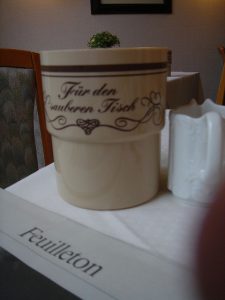Germany has the best playgrounds.
They’re so good at it, they even have categories of Spielplatz (playground): Bauspielplatz (building playground), Naturspielplatz (natural playground), Wasserspielplatz (water playground) and the most promising sounding, the Abenteuerspielplatz (adventure playground). Linguistically you’d think children wouldn’t even need a roof over their heads – they could just hang around on the various types of Spielplätze depending on whim and weather.
We had no idea of the greatness of German playgrounds until we started travelling with our kids. In Bergen, Norway, the hotel staff emphatically recommended a playground around the corner that was probably pretty novel during industrialization when mass-produced iron was new. In central Illinois we ended up on a playground where rusty bolts protruded from rough concrete at the base of a ‘60s-vintage slide. The afternoon sun turned a metal UFO climbing gym into a giant frying pan for unmarinated three-year-olds. It hadn’t changed since I played on it as a kid.

In Berlin, our go-to playground carried a circus theme and expanded as our kids grew. That’s partly what’s so great about German playgrounds: Most are custom-built wooden jobs that incorporate slides, climbing walls, elevated rope walkways and tunnels with some theme: A circus, a jungle, the deeper meaning of Jungian dream interpretation in pre-Weimar Stuttgart. That kind of thing.
Our backup was the Kleinkindspielplatz at Kollwitzplatz. A Kleinkindspielplatz is a little kid playground that ultimately gets over-run by slightly bossy, slightly too big kids who seem impervious to reprimands from strange parents. Kind of like what happens to any bar when the New York Times includes it in any dispatch about coolness.
But the variety of German playgrounds is amazing. At a Bauspielplatz, you let kids loose in a Robinson Crusoe landscape with hammers, nails and used wood. “Build a pirate ship!” the playground calls to the children. “Make sure you have your health insurance cards!” it calls to the parents.
A Naturspielplatz is just a nice way of saying: Overgrown, muddy playground with a few good climbing trees. It’s a cop out really. A playground maintained by an aging alcoholic who loves children but is busy just getting out of bed in the morning. The motto of Naturspielplätze is a German saying popular with lazy parents (not that that’s a bad thing): Dreck reinigt den Magen (dirt cleans the stomach).
And an Abenteuerspielplatz is like a mix of a Naturspielplatz and a Bauspielplatz with about twice the broken bones. In short: Fantastic!
German playgrounds even have something for the parents: You can bring beer to most (but not all). As my kids grew my hobby quickly became knowing the nearest beer-serving convenience store for each playground. I should have sold guides.
German playgrounds almost make me want to have another kid.
Almost.
1 Comment


![tumblr_inline_nzkq3sFpWx1sqqghr_500%255B1%255D[1]](http://howifoughtthegermansandwon.com/wp-content/uploads/2016/01/tumblr_inline_nzkq3sFpWx1sqqghr_500255B1255D1.jpg) I came from a country where train delays weren’t measured in minutes or even hours but rather days. In my childhood, American passenger trains were never delayed by things like inclement weather or suicidal twenty-somethings. They seemed to suffer from depression, only getting up the nerve to traverse the country after a couple of stiff whiskeys and a stern talking to by the Minister of Transportation.
I came from a country where train delays weren’t measured in minutes or even hours but rather days. In my childhood, American passenger trains were never delayed by things like inclement weather or suicidal twenty-somethings. They seemed to suffer from depression, only getting up the nerve to traverse the country after a couple of stiff whiskeys and a stern talking to by the Minister of Transportation.![tumblr_inline_nzkos3mfDR1sqqghr_500%255B1%255D[1]](http://howifoughtthegermansandwon.com/wp-content/uploads/2016/01/tumblr_inline_nzkos3mfDR1sqqghr_500255B1255D1.jpg)
![tumblr_inline_nzkossZHc51sqqghr_500%255B1%255D[1]](http://howifoughtthegermansandwon.com/wp-content/uploads/2016/01/tumblr_inline_nzkossZHc51sqqghr_500255B1255D1.jpg)